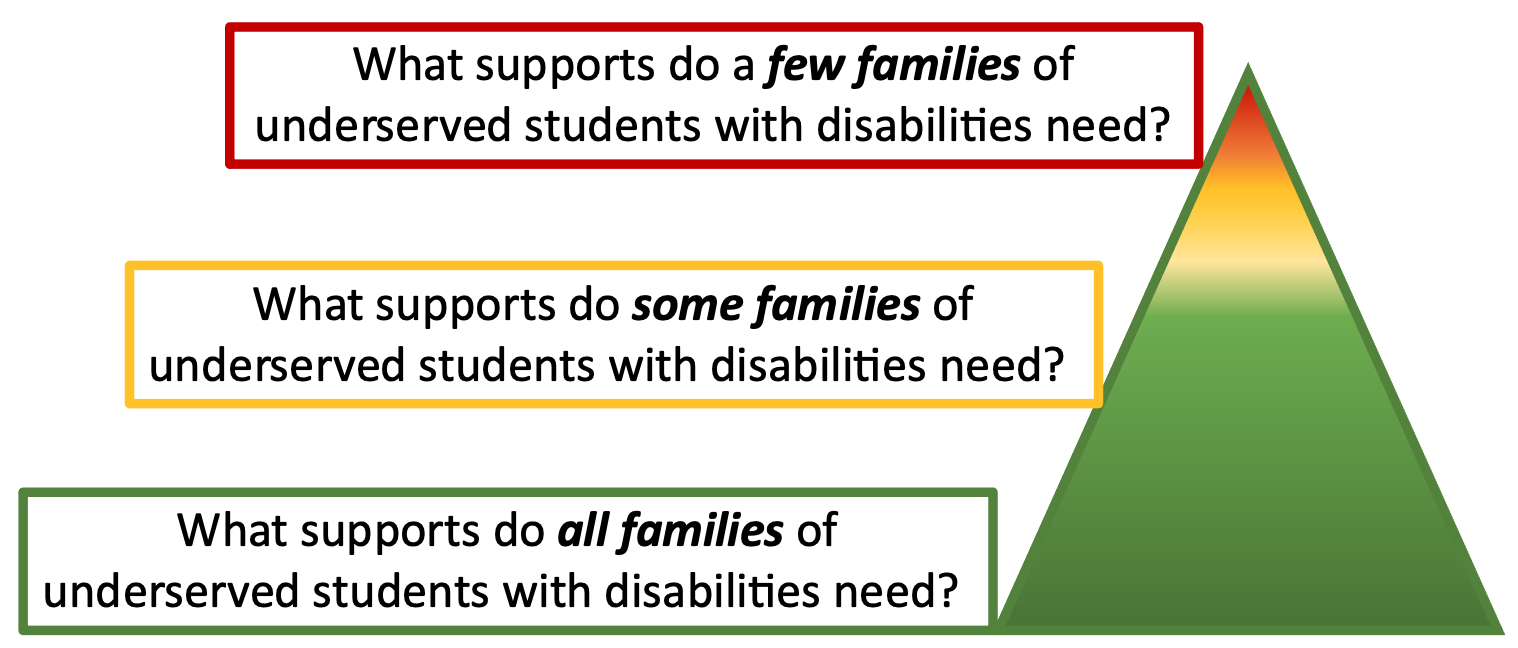
Model Demonstration of Equitable Partnerships Across Tiers and Home (E-PATH)
This model demonstration project was developed to address the need for equitable family partnerships between schools and underserved families of children with disabilities by leveraging a school’s existing multi-tiered system of support (MTSS) framework to center the voices and needs of these families and establish equitable partnerships across school and home. Schools implementing this approach center the voices and experiences of their families and establish equitable partnerships across tiers (of their PBIS/MTSS framework) and home (E-PATH).
We developed this approach in partnership with the Navigating Excellence Parent Center Assistance & Collaboration Team (NE-PACT), the SPAN Parent Advocacy Network, the Rhode Island Parent Information Network (RIPIN), and the Connecticut Parent Advocacy Center (CPAC).
Why E-PATH?
- Family-school partnerships enhance outcomes for families, teachers, and students,1 including students with disabilities.2
- However, common and known barriers often interfere with meaningful family engagement.3
- E-PATH leverages a widely implemented and empirically supported positive behavioral interventions and supports (PBIS) framework to address these barriers, enhance family engagement, and ultimately improve outcomes.
Coming Soon
- Resources to Support Equitable Family Engagement (Coming in 2025. For now, check out the Center on PBIS website and the Center for Parent Information and Resources website.)
- Equitable Family Engagement-Fidelity Tool (EFE-FT) (Coming in 2025)
- Model Demonstrations of Implementation in Elementary, Middle, and High Schools (2025-2028)
What is the E-PATH Framework?
If we design a framework that centers students and families with the greatest support needs, we design a framework with the potential to support all students and families. We consider universal supports for all, targeted supports for some, and individualized supports for a few underserved families of students with disabilities, including families who are military-connected.
What supports do a few families of underserved students with disabilities need?
What supports do some families of underserved students with disabilities need?
What supports do all families of underserved students with disabilities need?

What are the “Essential Elements” of E-PATH?
E-PATH builds into the Essential Elements of PBIS: in each tier and implementation level (project, district, school), leadership teams will enhance equitable partnerships by:
- Engaging underserved families and improving outcomes for students with disabilities
- Building into and enhancing existing systems (e.g., teaming, training, & coaching structures)
- Supporting implementation of a continuum of evidence-based family engagement practices
- Using data to monitor and support progress
What are the Goals of E-PATH?
Goal 1
Develop a self-study process
Goal 2
High-fidelity implementation
Goal 3
Increase family capacity and engagement
Goal 4
Improve student outcomes
Goal 5
Share a replicable model
Contact Information
For more information about the project, please contact the local Principal Investigators, Brandi Simonsen (brandi.simonsen@uconn.edu) or Katherine Meyer (katherine.meyer@uconn.edu) or from the subgroup organization, Carolyn Hayer (chayer@spanadvocacy.org) or Diana MTK Autin (diana.autin@spanadvocacy.org).
References
- Christenson, 1995; Fan & Chen, 2001; Izzo et al., 1999; Smith et al., 2020; Swap, 1990
- Blackorby et al., 2007; Fefer et al., 2020 Goldman & Burke, 2017; Miedel & Reynolds, 1999; Musendo et al., 2023; Newman, 2005
- Garbacz et al., 2018; Weingarten et al., 2020; Witte et al., 2021
- Center on PBIS, 2023